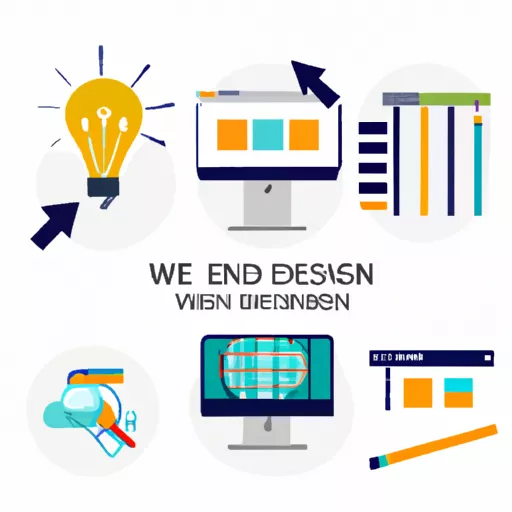
Web design is one of the key components of a successful website. It ensures the harmonious combination of all elements and modules, creates convenience and comfort for the user, and also reflects the originality and individuality of the brand. When designing a website, there are several factors that need to be considered in order to achieve maximum effect and functionality.
First and foremost, it is necessary to determine the goal of creating the website. What information will be presented on it? What target audience needs to be attracted? Based on this data, it is possible to develop an optimal structure and navigation that will help users quickly find the information they need.
In recent years, there have been significant changes in web design due to the development of technology and the emergence of new trends. In this article, we will consider some of them.
One of the main trends in web design is minimalism. More and more designers are abandoning excessive decoration in favor of simplicity and clean forms. Minimalism allows focusing on the main information and improves user perception. Various effects are used, such as smooth transitions, invisible navigation, or a parallax effect that adds depth and dimension to the page.
Another trend in web design is mobile responsiveness. Due to the increasing number of users visiting websites from mobile devices, there is a noticeable need for websites that are fully adapted to mobile platforms. The convenience of using a smartphone or tablet has become a critical factor in choosing a website to visit. Therefore, web designers are increasingly using technologies that allow adapting the website to different screen sizes.
Currently, technologies such as Responsive Web Design (RWD) and Accelerated Mobile Pages (AMP) are very popular. RWD allows creating websites with a flexible layout that automatically adjusts to the screen size of the device. AMP is a separate web page format that optimizes them for fast loading on mobile platforms.
Another trend related to mobile platforms is the "hamburger" menu. Instead of traditional navigation that takes up a lot of space on the screen, many websites use a hidden menu accessible by clicking on a button with a hamburger icon. This approach reduces the number of elements on the page, making it neater and more minimalist.
Lately, the use of large and colorful headings has also become popular. They attract user attention, make the design more expressive and vibrant. Often, headings are accompanied by animation, parallax effect, or interactive elements.
Web design also increasingly uses animation and video. Animations can be used to improve the user experience or as a decorative element. They bring the design to life and make it more attractive. Videos are used to create a sense of reality and provide the opportunity to convey more information in a shorter timeframe.
Web designers also pay attention to the aesthetic aspect - the use of beautiful graphic elements and fonts. Typography receives a lot of attention - choosing the right fonts that will harmonize with the overall style and goals of the website.
However, focusing solely on external beauty would be wrong. It is important for the website design to be functional and intuitive for the user. Reliable indicators of a competent approach to website creation include cross-browser compatibility, high loading speed, simple navigation, and clear page structure.
OpenAI has developed a neural network that can be used to create unique web design for Zephyrnet. This is the first step towards the automatic creation of web design using artificial intelligence. The program can create a simple website structure in a matter of minutes. However, this method does not completely replace the manual website design process but can be used as a quick preview of the future website.
In conclusion, it can be inferred that web design is constantly evolving and adapting to the changing requirements of users and technologies. It is important to take into account the latest trends and apply them in the design to create a convenient, attractive, and functional website.


